All-electric Hyundai Ioniq 5 23 | 02 | 2021
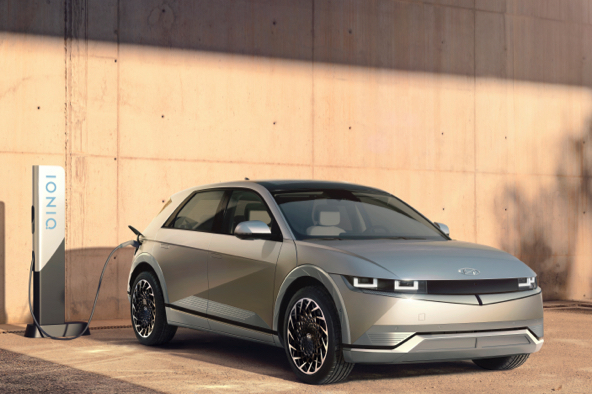
HYUNDAI HAS LIFTED the wraps from its Ioniq 5, the first model from the Korean manufacturer’s new all-electric sub-brand. Set to go head-to-head with the likes of the VW ID.3 and ID.4, plus the Tesla Model 3, the Ioniq 5 is expected to go on-sale in the UK this summer. Prices are likely to start around £38,000. (Related: Bold new look for Hyundai Kona electric)
However, we do know the high-spec launch model, called the ‘Project 45’, will be priced from £45,000 including the £3,000 government plug-in car grant.
The Ioniq 5 will be available with the choice of two battery sizes; either a 72.6kWh or 58kWh. Both will be available with either rear- or all-wheel drive, and the maximum range will be 292 miles.
The more powerful 72.6kWh version — a dual-motor, all-wheel-drive Ioniq 5 with combined power of 302bhp and a total of 446lb/ft — will hit 62mph from standstill in 5.2secs and top-out at 115mph. The smaller and slower 58kWh, 167bhp rear-wheel-drive set-up, handles 0-62mph in 8.5sec. (Related: Hyundai lifts wraps from i20 N)
The Ioniq 5 also features 800V battery technology that gives the potential for ultra-rapid charging and supports up to 220kW DC charging. That means recharging from 10% to 80% will take just 18 minutes. Worth highlighting that until now, 800V cabling has been available on only high-end sports cars like Porsche Taycan.
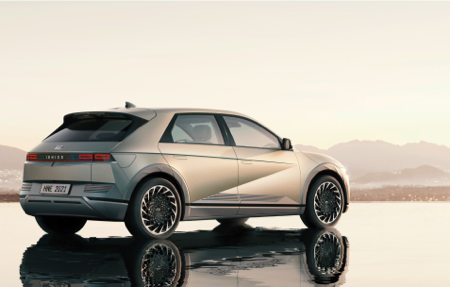
And while the near-300-mile range is already attractive, it can be further extended by a solar panel roof, which is likely to be offered as an option. Hyundai claims the set-up can produce just over 200W of power and, in bright, sunny regions like southern Europe, it could a add up to 1240 miles (2000km) worth of electricity per year.
Based on Hyundai’s all-new electric vehicle platform, called E-GMP, the 5 is a 4.6-metre-long hatchback. And like the ID.3., the battery pack is located under the floor meaning the passenger compartment to a height where the Hyundai is actually referring to the body style as a crossover. (Related: Hyundai Kona Hybrid returns 70mpg)
It’s all a long car. The 3000mm wheelbase — long for a car of this type — is actually longer than that of an Audi A6. Intriguing, given the Hyundai is 300mm shorter overall than the Audi. Oh. And the 5’s wheelbase is around 250mm longer than the ID.4’s.
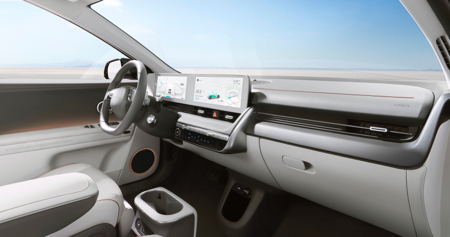
Externally, Hyundai designers have continued their recent confident design language, resulting in the Ioniq 5 looking very sharp, clean and simple. There’s a new clamshell bonnet and flush door handles, plus ultra-slim headlights; the latter were seen on the 45 Concept, a show car that previewed the Ioniq 5 back in 2019. (Related: Hyundai i10 N pricing)
Also at the front, because of the relative lack of demand for cooling in an EV, the conventional front grille has been replaced by what Hyundai calls a ‘sensor area’. This houses the hardware for the car’s driving assistance systems.
Inside the cabin, it’s clear the Ioniq 5 hints at a new improvement in quality and materials. While there’s no conventional instrument cowl, there is a 12.25-inch digital display that sits alongside a similarly sized infotainment system. An augmented-reality head-up display will project satnav directions onto the windscreen ahead of the driver.
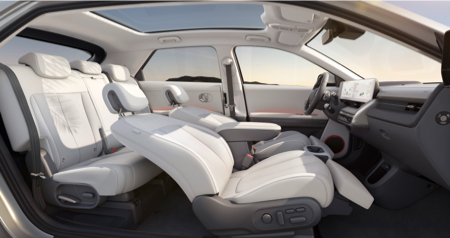
Tech-wise, the Hyundai comes with the latest version of Hyundai’s Bluelink connected car services. This lets customers control the car from their smartphone, and also contains charging station information, including availability and estimated charging time. And of course, the 5 comes with smartphone control, so customers can remotely alter the climate control or charge settings.
Interestingly, the front seats can be completely reclined. Why? According to Hyundai, it’ll allow the crossover’s occupants to have a nap while waiting for their car to recharge. Hmmm … !
In the rear, passengers will benefit from slim front-seat backrests which boost legroom, plus there’s a flat floor thanks to the lack of a transmission tunnel. And cleverly, the second row of seats slide back and forward, allowing further versatility in terms of cabin space and boot capacity.
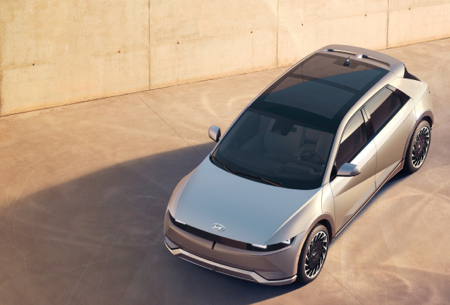
In standard form, the boot offers 531 litres of luggage space; that’s noticeably ahead of most family hatchbacks. Impressively, it can then be extended to 1591 litres with the second row of seats folded down. At the front, there’s a small storage area — 57-litres in 2WD, 24 in 4WD versions — beneath the bonnet that could be used for the charging cables
One final, never point worth highlighting. The Ioniq 5’s charging system has bi-directional functionality. “What’s that?”, I hear you ask. Two examples:
First; inside the cabin a conventional 220V power socket will allow users to plug in an electric item such as a laptop.
Second; the car’s charging port, which is situated at the rearmost tip, beyond the back wheel, can also export charge as well as receiving it. In theory, the 5 could provide electricity to another vehicle at up to 3.6kW via a conventional Type 2 cable. Clever.
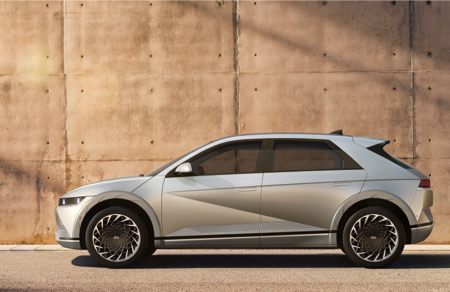
Related: Hyundai reveals all-electric Kona
Keep up-to-date with all the latest news by following us on twitter.com/Scotcars
Jim McGill